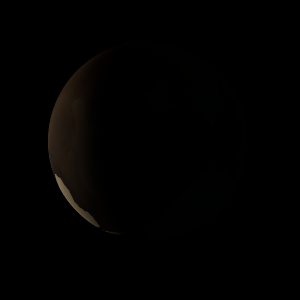|
|
Space Astro
|
Info for exoplanet "Sida-uq"
| Scientific (actual) data |
|---|
| Name | HD 25723 c |
| Planet status | Confirmed |
| Mass sini | 1.33 |
| Orbital period | 2369.84 |
| Semi major axis | 4.35 |
| Orbit eccentricity | 0.22 |
| Discovered | 2020 |
| Updated | 2020-10-26 |
| Omega | 210.58 |
| K | 13.59 |
| Publication | Published in a refereed paper |
| Detection type | Radial Velocity |
| Mass measurement type | Radial Velocity |
| Star name | HD 25723 |
| Right ascension | 61.1° |
| Declination | -12.8° |
| Mag v | 5.6 |
| Star distance | 117.9 |
| Star metallicity | -0.03 |
| Star mass | 2.12 |
| Star radius | 13.76 |
| Star sp type | K1 III |
| Star age | 0.95 |
| Star temperature | 4766 |
| Wikipedia article | HD 25723 c |
Back
| |
| Fictional info (?) |
|---|
| Suggested name | Sida-uq |
| Planet type | Cold planet |
| It may have had methane oceans in the past, but these would have vaporized as the temperature rose due to a runaway greenhouse effect.
Because of its rapid rotation, the planet's shape is that of an oblate spheroid (it has a slight but noticeable bulge around the equator).
The dark oceans are populated by aggressive interesting bacteria, the "Roprax-cal", that feed everywhere by devouring the somewhat smaller "Deskeka-pho". Most Roprax-cal are related to Persete'lis and have 12 tentacles and vary in length from 70 to 120 cm. Most Roprax-cal can survive temperatures from 60 to 130°C and extreme gravity. |
| Estimated population | 900000000 |
| Atmosphere | Carbon dioxide | 40% |
| Water | 32% |
| Methane | 28% |
| Oxygen | 0.044% |
| Atmospheric pressure | 0.14 bar |
 |
| No known satellites |
| Google search for Sida-uq |
|
Website by Joachim Michaelis
|
|
|
|